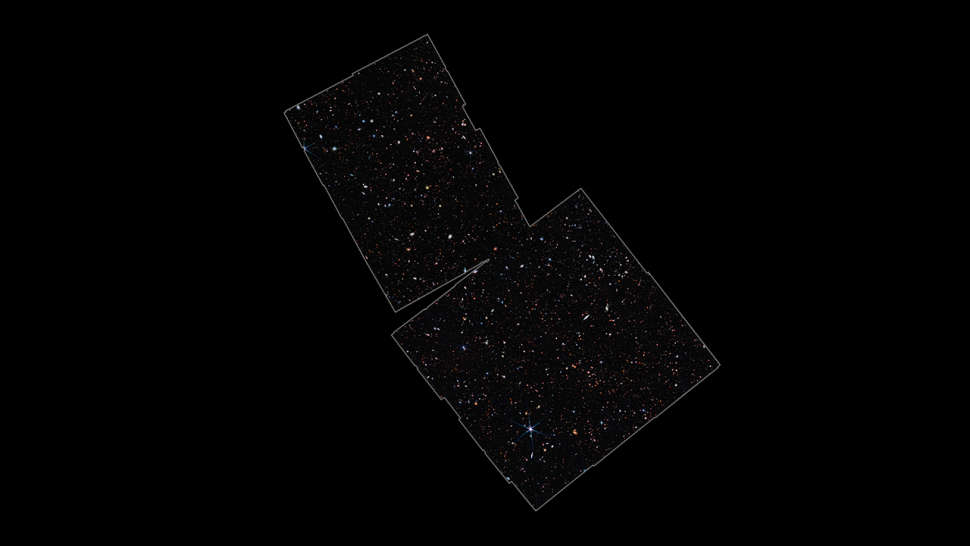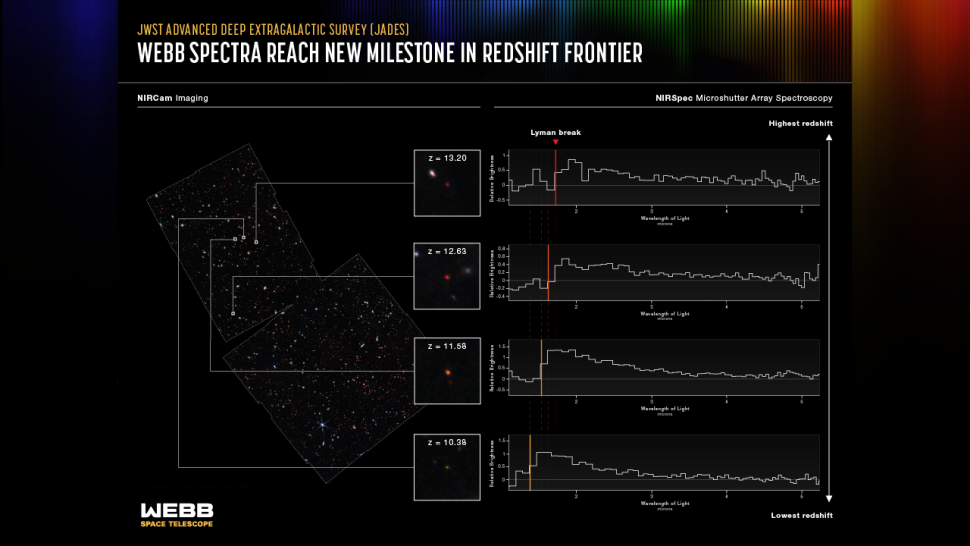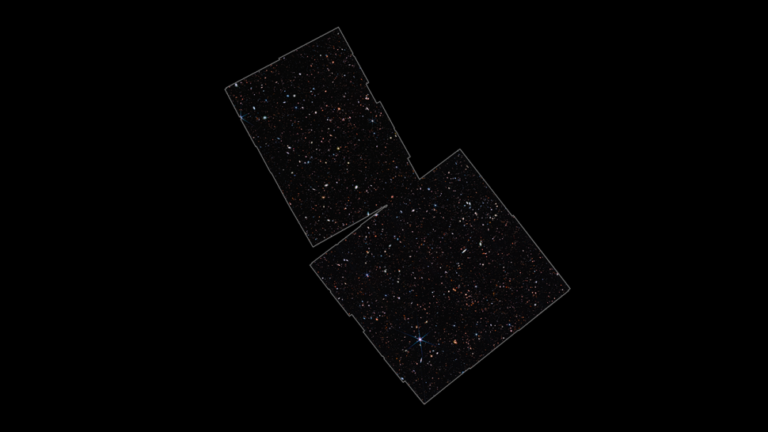Confirmed! The oldest known galaxies have been found by the James Webb Space Telescope.
The galaxies formed when the universe was only 350 million years old, just 2% of its current age.
Four ancient galaxies discovered by the James Webb Space Telescope in the first few months of operation have been confirmed by astronomers to be the oldest objects ever discovered by mankind and to be almost as old as the cosmos itself.
The James Webb Space Telescope‘s Near Infrared Camera (NIRCam) captured pictures of the galaxies within hundreds of intriguing star clusters (Webb or JWST). But after closely examining these ancient objects with the Near Infrared Spectrograph, which showed their chemical makeup and calculated how quickly these galaxies are departing from Webb, scientists were only able to establish that they truly were as old as they appeared.
The light from the four galaxies took more than 13.4 billion years to reach Webb, according to the researchers. More specifically, the telescope observes the galaxies as they appeared only 350 million years after the Big Bang, or 2% of the universe’s present age, even though the galaxies must have begun to form even earlier.

Webb was specifically designed to observe such young star families, and astronomers are thrilled that it has already produced such intriguing data.
Brant Robertson, an astronomer at the University of California, Santa Cruz, and one of the researchers involved in the findings, stated in a statement that “These [galaxies] are much beyond anything we could have envisioned seeing before JWST.” For the first time, thanks to JWST, we can now locate such far-off galaxies and afterwards verify their distance using spectroscopy.
Astronomers had to precisely determine the so-called redshift from the NIRSpec data in order to verify that the galaxies were as old as they appeared to be. Due to the universe’s expansion, which stretches the light emitted by distant stars and galaxies into longer, redder wavelengths of the light spectrum, redshift causes objects that are traveling further away from us to look redder.
The furthest galaxies discovered by Webb have a redshift of 13.2, which is equivalent to an age of around 13.5 billion years, the greatest yet determined for any galaxy.
The cosmos is only roughly 325 million years old at redshift 13, according to Robertson.
The JWST Advanced Deep Extragalactic Survey (JADES) project, which makes use of NIRCam and NIRSpec to explore the early cosmos in hitherto impractical ways, included the data as part of its observations.

JADES is an international partnership of more than 80 astronomers, and it is only getting started. The researchers will then examine specific stars in those galaxies, some of which may have formed up to 100 million years before Webb was able to observe them.
These data allow us to determine the inherent brightness of the galaxies as well as how many stars they contain, according to Robertson. We can now begin to analyze the evolution of galaxies in great detail.
According to Robertson, the data support the predictions made by scientists using current models of galaxy formation.
The scientists also found galaxies in the NIRCam scans that appeared to be much older than those that have been confirmed, but the ages of those have not yet been validated by the more precise spectroscopic measurements from NIRSpec.
The new findings will be presented on Monday (Dec. 12) at a Space Telescope Science Institute conference in Baltimore.
Source:SpaceCom
Do not forget to share your opinion with us to provide you with the best posts !




0 Comments